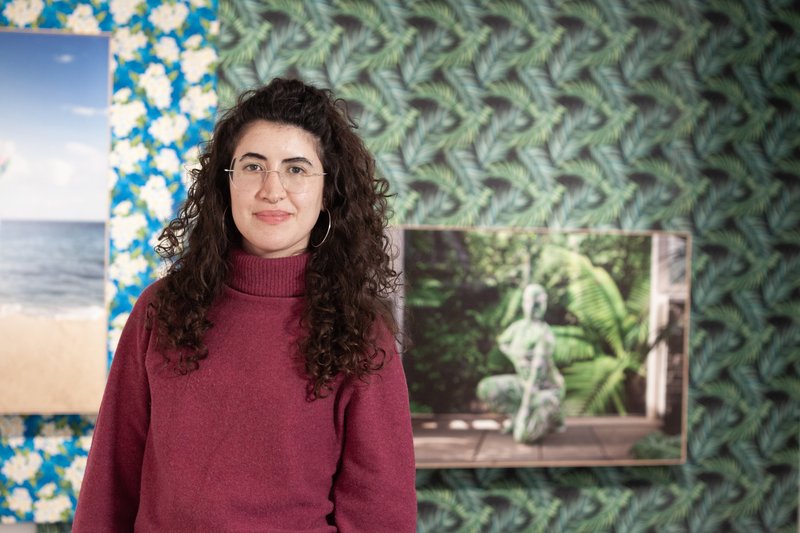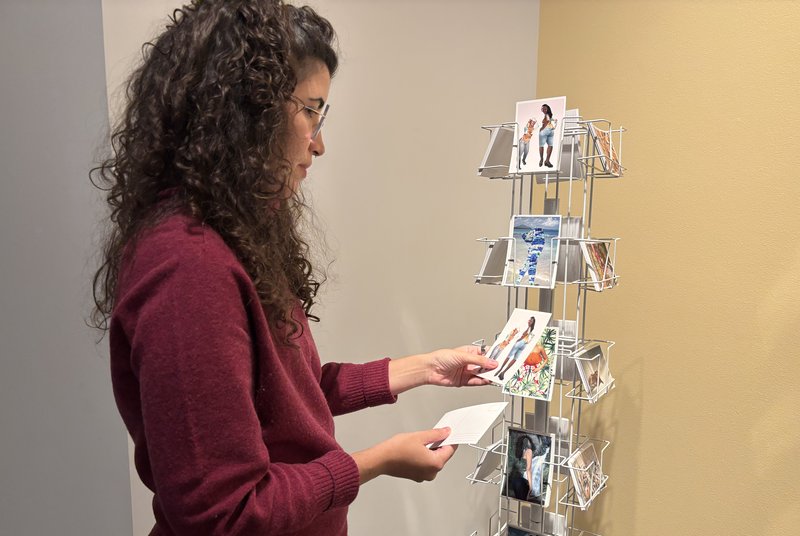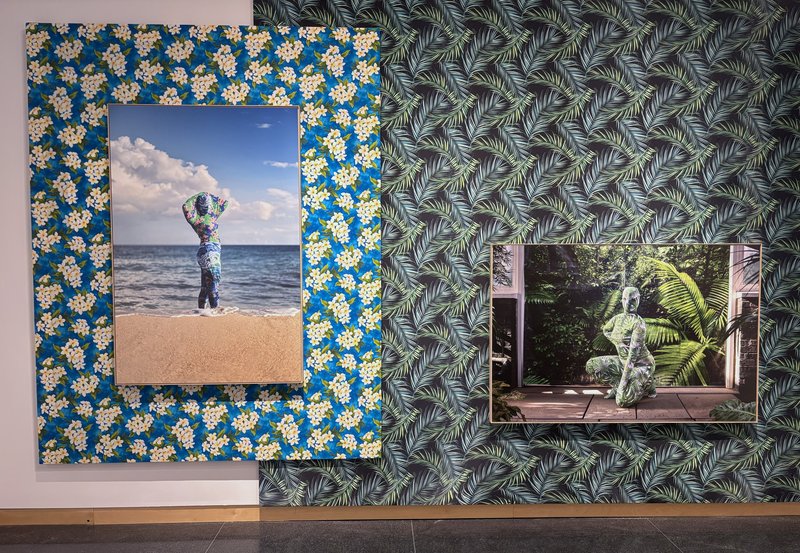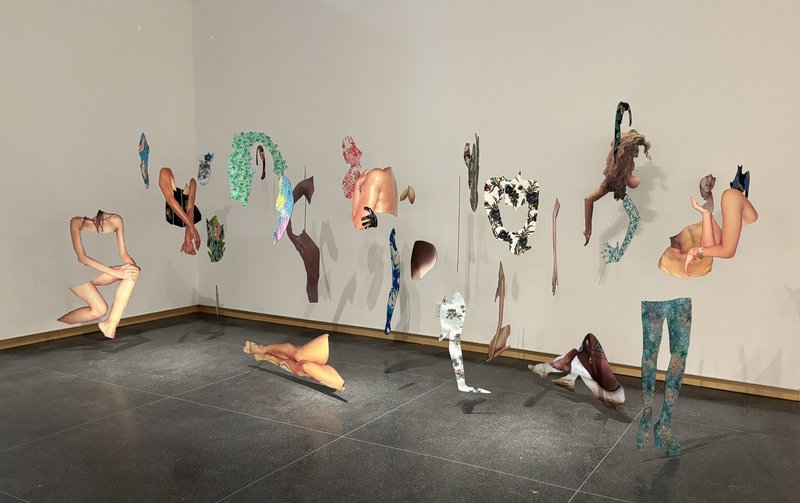Caribbean Art: Uncovering the Region's Photographic Heritage through Contemporary and Historical Works
An art exhibition of historical and contemporary tropical images teaches viewers how to analyze these works.
On the surface, viewing a photo from a 1950s travel brochure of a pristine Caribbean beach with palm trees and sunshine might make you dream about a tropical vacation. But if you analyze that image more deeply, it can reveal a much more complicated past, says Cristina Pardo Porto, assistant professor of Latinx literature and culture in the College of Arts and Sciences’ Department of Languages, Literatures and Linguistics. These stereotypical images of the Caribbean, used to promote the travel industry, are not just innocent portrayals of paradise. "They are part of a larger system of historical and ongoing inequalities," notes Pardo Porto. Through critical analysis of photography and artwork, images can serve as catalysts for social awareness and change, prompting viewers to reflect on and address cultural inequities.

A&S Professor Cristina Pardo Porto curated the art exhibition titled Joiri Minaya: Unseeing the Tropics at the Museum, on display at the SU Art Museum through May 10.
Pardo Porto explains that the history of exploitation dates to the 15th and 16th centuries when Europeans began to colonize the Americas. Settlers illustrated the Caribbean as an exotic and fertile land ripe for extraction, reinforcing ideas of ownership and domination.
“These narratives justified the exploitation of the land and its people, laying the groundwork for the contemporary tourism industry,” says Pardo Porto. “Tourism, in turn, relies on similar fantasies, using idyllic images of beaches, palm trees and smiling locals to market the region as an escape for wealthy foreigners. These visual constructs mask the inequalities and labor exploitation that sustain the industry.”
According to Pardo Porto, the growth and expansion of large hotels and resorts has led to environmental degradation and the displacement of local communities who are forced to relocate within their own country.
“Natural resources are privatized for resorts, and local workers are often paid low wages while a privileged group of tourists reaps the benefits,” she says.
During the spring semester, Pardo Porto is presenting an art exhibition in collaboration with the Syracuse University Art Museum which invites visitors to critically examine historical and contemporary images of tropical regions. Its aim is to help viewers recognize how these representations impact the lives of those living within these communities.
The exhibition, titled Joiri Minaya: Unseeing the Tropics at the Museum, is on view in the SU Art Museum’s Joe and Emily Lowe Galleries through May 10. The gallery features works by Minaya, a Dominican American artist whose works critique how stereotypical representations, rooted in colonial histories, continue to misrepresent her community and identity. Minaya’s works are exhibited alongside historical photographs and artwork from the SU Art Museum’s collections, reflecting on the impact of colonization, tourism and commercialization on the Caribbean. Each artwork features a wall text, available in both English and Spanish, authored by Pardo Porto, which explains the significance of each work.

Upon entering the gallery, visitors are invited to take a postcard created by Minaya. These postcards, like the one Pardo Porto is holding above, blend images from actual tourism promotions with layers of stereotypical tropical imagery superimposed on women's bodies. This artistic approach encourages visitors to confront and challenge the tropes of tropicality that reduce women to mere objects of exotic fascination.
Illuminating Visual Culture of the Caribbean
The idea to bring Minaya’s award-winning work to campus stems from Pardo Porto’s longstanding interest in the history of Latin American photography and visual culture. She notes that visual culture encompasses all the images that surround us and shape our daily lives, from archival images, fine art and product advertisements to photos taken with phone cameras and beyond.
While conducting research for her dissertation on artistic photography in and of the Caribbean and Central American regions, she recognized an underrepresentation in the history of photography in Latin America. Since then, much of her scholarship has focused on bringing awareness to this topic.
Pardo Porto is now writing a book manuscript titled Latent Photographies: A Diasporic Reframing of the History of Photography, which will present a decolonial history of Latin American photography. She received a Syracuse University Humanities Center Faculty Fellowship during the Spring 2024 semester to focus on writing her book and other related projects, including the exhibition of Minaya’s works.
What You Will See
Two works on display at the exhibition are from Minaya’s Containers (2020) series, where she uses her own body wrapped in fabric with tropical patterns, in stereotypical and unnatural poses. Pardo Porto notes that this embodies the imagery imposed on both women (the pose) and landscape (tropical print, flowers, etc.).

Container #3 (left) and Container #7 (right) by Joiri Minaya; Pigment print; Courtesy of the artist and Praise Shadows Gallery.
“She draws attention to how tropicality is commercialized and consumed, inviting viewers to reflect on their complicity in perpetuating harmful representations,” says Pardo Porto. “Minaya not only highlights the absurdity of tropical imagery but also prompts viewers to confront and rethink the ingrained stereotypes they might unconsciously accept and reproduce.”

For the installation titled #dominicanwomengooglesearch (2016), Minaya conducted a Google Image search for the term "Dominican women." Based on the results of that search, she digitally isolated individual body parts, enlarged and printed them on Sintra board, and then hand-cut them after covering the backs with tropical-patterned fabrics. This installation invites viewers to reflect on and challenge the recurring, sexualized poses associated with tropicalized identities.
Student Engagement
Students in Pardo Porto’s Contemporary Latinx Art (undergraduate) and Theorizing Central American and Caribbean Diasporas Through Art (graduate) classes will take part in assignments tied to the exhibition. Students will write about Joiri Minaya’s work and engage with archival and collection materials from the University’s Art Museum and Special Collections Resource Center. She says this approach will help them explore the historical dialogue between past and present images.
“Many of our students aren’t aware of the resources available in our collections and on campus, and this exhibition offers a unique opportunity to learn directly from an artist whose work is on campus,” she says. “I always include these types of cross-campus collaborations, such as with the Special Collections Research Center.”
Pardo Porto hopes that visitors to the exhibition will develop a deeper understanding of how stereotypical images are created and embedded in visual culture. “My hope is that students, faculty, staff and the local community will gain the tools to see and acknowledge the pervasive tropes of tropicality and then actively ‘unsee’ them—dismantling these limiting frameworks and fostering new ways of seeing.”
